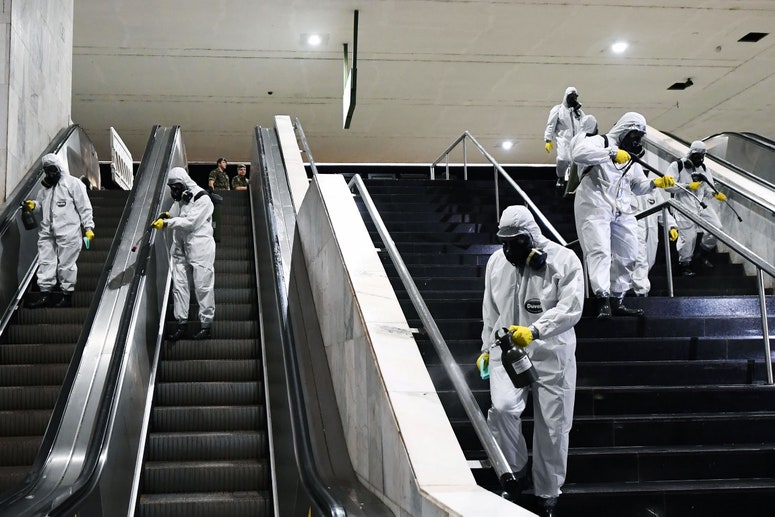Six weeks after the US surpassed all other countries in the number of reported Covid-19 cases, some states are beginning to ease social distancing measures. As people start to slide back into close contact with one another, the nation’s top health officials are worried that the US still doesn’t have systems in place to effectively test, track, and halt the spread of the deadly respiratory disease. Testifying remotely before the Senate on Tuesday, Anthony Fauci, director of the National Institute of Allergy and Infectious Diseases, warned of a resurgence if cities and states open up without being able to contain new cases. “My concern is that we will start to see little spikes that might turn into outbreaks,” he said.
Without a vaccine, smothering these spikes will require a legion of contact tracers, whose job will be to find people who’ve been exposed to the novel coronavirus and prevent them from spreading it. Other countries, like South Korea and Singapore, have already proved this “test, trace, isolate” strategy can work—if you have enough tests and enough tracers. The US doesn’t have enough of either.
In the Before Times, there were only about 2,200 contact tracers for the whole US, according to the Association of State and Territorial Health Officials. They would help squelch periodic flare-ups of tuberculosis, HIV, syphilis, and other dangerous diseases. Now, they’re all working around the clock on Covid-19. Public health experts estimate we need 100,000 to 200,000 more to safely reopen American society.
I wanted to know what it takes to become one of them. So on Monday, when the nation’s first online course in coronavirus contact tracing went live, I signed up and dove in.
As with testing and acquiring personal protective equipment, the federal government has left the challenge of recruiting and training an army of new contact tracers up to state and local public health departments. Absent a national plan, epidemiologists at the Johns Hopkins Bloomberg School of Public Health stepped in to create a crash course that they hope will help public health departments rapidly expand their workforce. Their first remote students will be the thousands of people who’ve already applied to be contact tracers in New York state, the American epicenter of Covid-19. “To be honest, we’ve never done contact tracing at this scale in our living memory,” says Emily S. Gurley, an infectious disease epidemiologist who is leading the program. “So a lot of this is brand new.”
The free, six-hour course, which teaches a mix of virology, epidemiology, medical ethics, privacy, and interview techniques, opened for registration on the online educational platform Coursera. Though it’s geared toward people with ambitions of joining the ranks of tracers, it’s open to anyone. So that’s why on Monday morning, I AeroPressed an extra cup of coffee, turned off my Slack notifications, and settled into a sunlit corner of my couch, ready to take notes on how to catch a coronavirus killer.
The course is organized into five modules, each made up of video lectures and short quizzes you have to pass to move on to the next one. First up was an overview of Covid-19—symptoms of the disease, how it spreads, and how different kinds of diagnostic tests work. As I watched slides showing a calendar, in my headphones Gurley’s voice explained that most people become contagious five days after getting infected themselves. If it takes a day or two to get test results back, that leaves contact tracers a very tight window of opportunity to reach people and encourage them to self-quarantine. “It happens very fast,” Gurley says in the recorded lecture. Contact tracers, she says, have to move just as quickly to break the chain of transmission.

